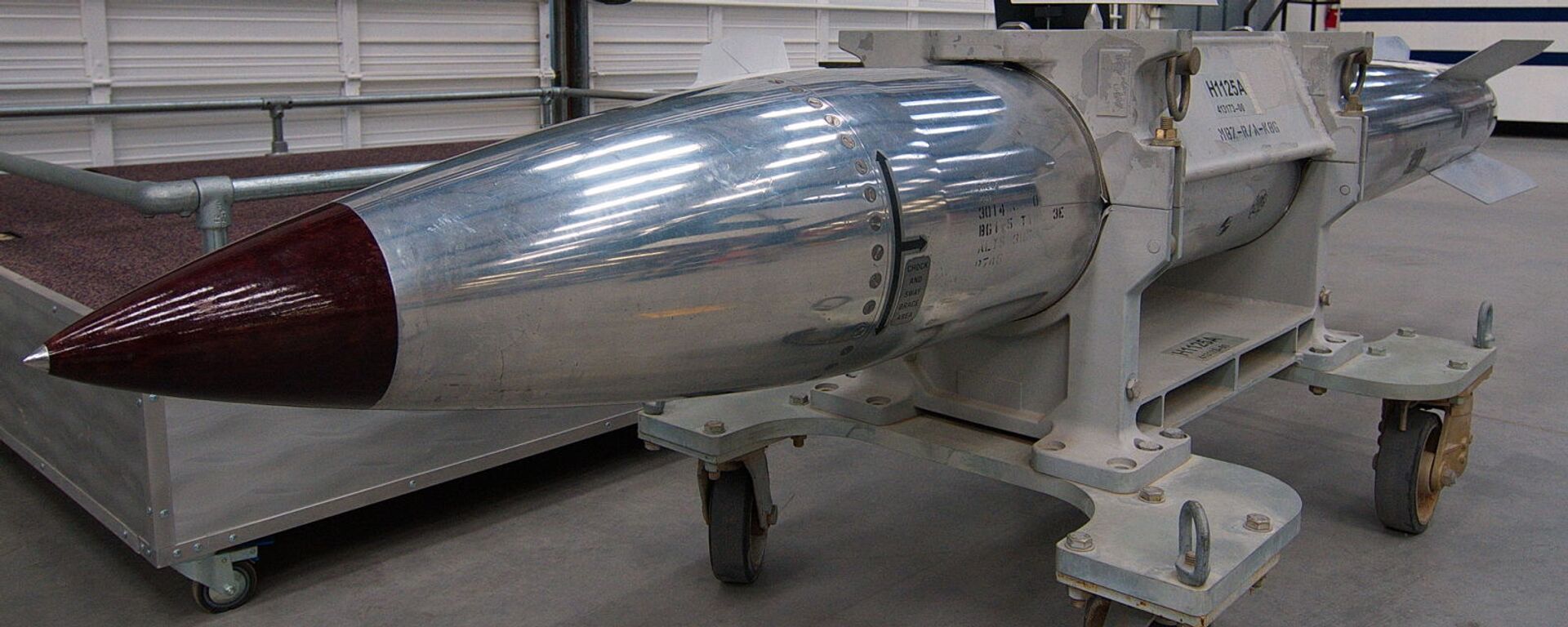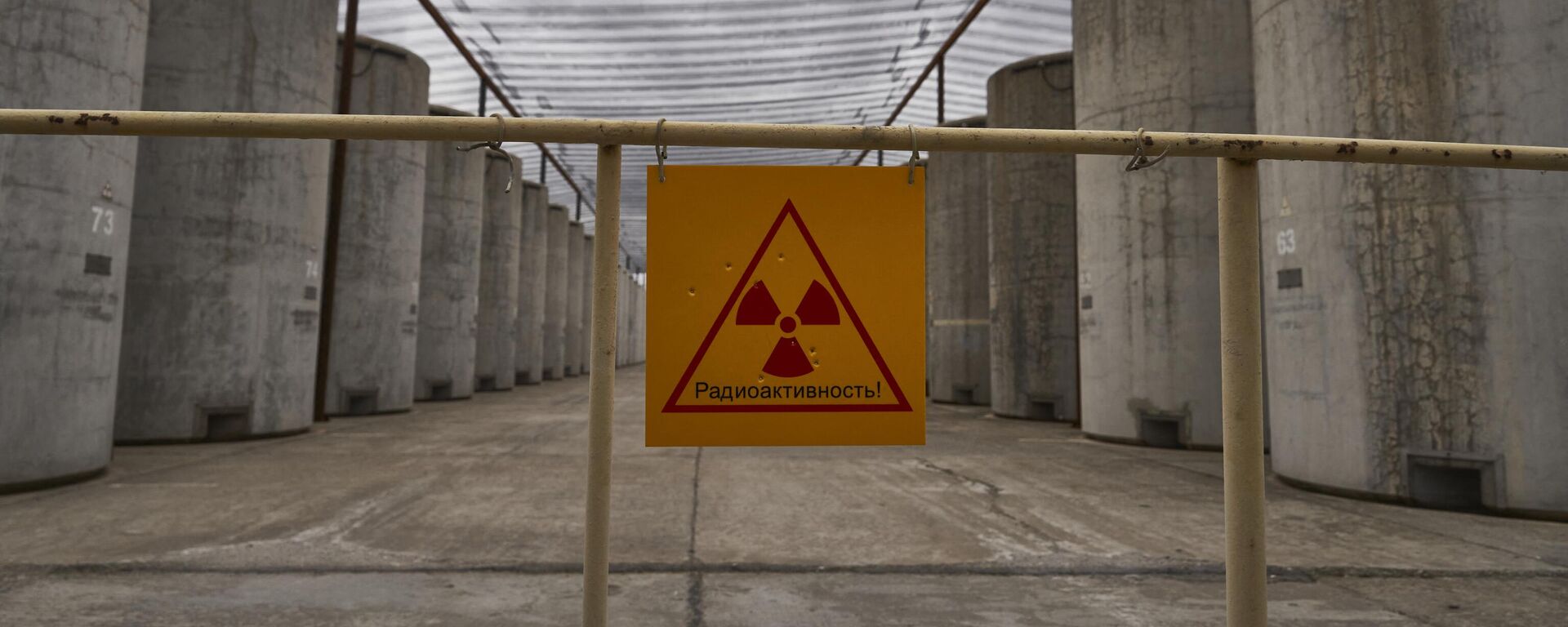https://sputnikglobe.com/20230427/us-resumes-large-scale-production-of-plutonium-pits-for-nukes-1109886797.html
US Resumes Large-Scale Production of Plutonium Pits for Nukes
US Resumes Large-Scale Production of Plutonium Pits for Nukes
Sputnik International
During the Cold War, the US produced thousands of ‘plutonium pit’ detonators at the Rocky Flats Plant in Colorado.
2023-04-27T15:00+0000
2023-04-27T15:00+0000
2023-04-27T15:40+0000
military
nuclear weapons
plutonium
los alamos
https://cdn1.img.sputnikglobe.com/img/07e7/04/1b/1109886441_0:0:800:451_1920x0_80_0_0_5a56993f6d8138964245f323b3c1be48.jpg
The United States will resume the large-scale production of "plutonium pit" detonators used in nuclear weapons, the National Nuclear Security Administration (NNSA), a sub-agency of the Department of Energy responsible for nuclear weapons, has announced.In a new report to Congress, the NNSA indicated that its 2023 Stockpile Stewardship and Management Plan includes resources to ramp up plutonium pit production to 80 units per year, in accordance with approval received in 2021 to "reestablish, for the first time since the early 1990s, the capability to produce War Reserve plutonium pits to ensure the US nuclear deterrent remains safe, secure, reliable, and effective now and in the future."Plutonium pits, also known as plutonium cores, are a key component in both tactical and strategic nuclear weapons, serving as a trigger – setting off a nuclear reaction that creates a large, secondary explosion of the main nuclear payload.The 80 pits per year will be produced jointly at Los Alamos – the birthplace of the American nuclear bomb, and the Savannah River Site outside Augusta, Georgia. 30 cores will be produced at the former, and 50 at the latter by repurposing an existing facility "to meet this manufacturing capacity."Production is expected to ramp up gradually, with "not less than 10" pits expected in 2024, 20 in 2025, 30 in 2026, and "not less than 80" per year from 2030 onward.The NNSA report also shed light on a number of other nuclear weapons-related plans, including a program to extend the service life of the B61 Mod 12 nukes which the US has stockpiled at home and across half-a-dozen sites abroad to address issues related to “multiple components that are nearing end-of-life,” as well as "military requirements for reliability, service life, field maintenance, safety and use control." The report highlighted that the total estimated cost of the program has jumped from $8.3 billion to $9.6 billion.The new information about the production of new plutonium cores, combined with the modernization of stockpiled weapons, comes amid the US’ ongoing modernization of it’s nuclear triad – a program expected to cost taxpayers up to $1.5 trillion over the next 30 years.While scientists at Los Alamos built 31 plutonium pits between 2007 and 2013, large-scale production conducted at the far larger Rocky Flats Plant (which reached upwards of 1,000-2,000 per year during the Cold War) halted in 1989 after the FBI and the Environmental Protection Agency raided and closed the facility over a series of environmental safety violations.According to the Center for Arms Control and Non-Proliferation, plutonium pits – which are present in all of America’s estimated nuclear weapons, typically have a lifespan of 100 years or more. However, they are also subject to gradual degradation and corrosion, thereby "potentially affecting" their efficacy over time.The 80 plutonium pits per year requirement was introduced in the Trump administration’s 2018 Nuclear Posture Review, with Congress allocating $1.37 billion for the job in 2020. However, the Congressional Budget Office watchdog says spending to expand plutonium pit production capacity could balloon to up to $9 billion over the coming five-year period.
https://sputnikglobe.com/20230408/where-are-us-nuclear-weapons-located-1109264542.html
https://sputnikglobe.com/20230426/kiev-endangering-europes-nuclear-security---former-ukrainian-pm-1109850729.html
los alamos
Sputnik International
feedback@sputniknews.com
+74956456601
MIA „Rossiya Segodnya“
2023
News
en_EN
Sputnik International
feedback@sputniknews.com
+74956456601
MIA „Rossiya Segodnya“
Sputnik International
feedback@sputniknews.com
+74956456601
MIA „Rossiya Segodnya“
plutonium pits, plutonium core, nuclear weapons, nukes, los alamos, united states, what is plutonium pits, do we use plutonium pits in the us, does us have plutonium pits
plutonium pits, plutonium core, nuclear weapons, nukes, los alamos, united states, what is plutonium pits, do we use plutonium pits in the us, does us have plutonium pits
US Resumes Large-Scale Production of Plutonium Pits for Nukes
15:00 GMT 27.04.2023 (Updated: 15:40 GMT 27.04.2023) During the Cold War, the US produced thousands of “plutonium pit” detonators at the Rocky Flats Plant in Colorado. Production halted in 1989 after the FBI and the EPA uncovered massive violations of environmental regulations. A small handful of pits has since been produced at the Los Alamos National Laboratory in New Mexico.
The United States will resume the large-scale production of "plutonium pit" detonators used in nuclear weapons, the National Nuclear Security Administration (NNSA), a sub-agency of the Department of Energy responsible for nuclear weapons, has announced.
In a new
report to Congress, the NNSA indicated that its 2023 Stockpile Stewardship and Management Plan includes resources to ramp up plutonium pit production to 80 units per year, in accordance with approval received in 2021 to "reestablish, for the first time since the early 1990s, the capability to produce War Reserve plutonium pits to ensure the US nuclear deterrent remains safe, secure, reliable, and effective now and in the future."
Plutonium pits, also known as plutonium cores, are a key component in both tactical and strategic nuclear weapons, serving as a trigger – setting off a nuclear reaction that creates a large,
secondary explosion of the main nuclear payload.
The 80 pits per year will be produced jointly at Los Alamos – the birthplace of the American nuclear bomb, and the Savannah River Site outside Augusta, Georgia. 30 cores will be produced at the former, and 50 at the latter by repurposing an existing facility "to meet this manufacturing capacity."
Production is expected to ramp up gradually, with "not less than 10" pits expected in 2024, 20 in 2025, 30 in 2026, and "not less than 80" per year from 2030 onward.
The NNSA report also shed light on a number of other nuclear weapons-related plans, including a program to extend the service life of the
B61 Mod 12 nukes which the US has stockpiled at home and across half-a-dozen sites abroad to address issues related to “multiple components that are nearing end-of-life,” as well as "military requirements for reliability, service life, field maintenance, safety and use control." The report highlighted that the total estimated cost of the program has jumped from $8.3 billion to $9.6 billion.
The new information about the production of new plutonium cores, combined with the modernization of stockpiled weapons, comes amid the US’ ongoing modernization of it’s nuclear triad – a program expected to cost taxpayers up to
$1.5 trillion over the next 30 years.
While scientists at Los Alamos built
31 plutonium pits between 2007 and 2013, large-scale production conducted at the far larger Rocky Flats Plant (which reached upwards of 1,000-2,000 per year during the Cold War) halted in 1989 after the FBI and the Environmental Protection Agency raided and closed the facility over a series of
environmental safety violations.
According to the Center for Arms Control and Non-Proliferation, plutonium pits – which are present in all of America’s estimated nuclear weapons, typically have a lifespan
of 100 years or more. However, they are also subject to gradual degradation and corrosion, thereby "potentially affecting" their efficacy over time.
The 80 plutonium pits per year requirement was introduced in the Trump administration’s 2018 Nuclear Posture Review, with Congress allocating $1.37 billion for the job in 2020. However, the Congressional Budget Office watchdog says spending to expand plutonium pit production capacity could balloon to
up to $9 billion over the coming five-year period.




